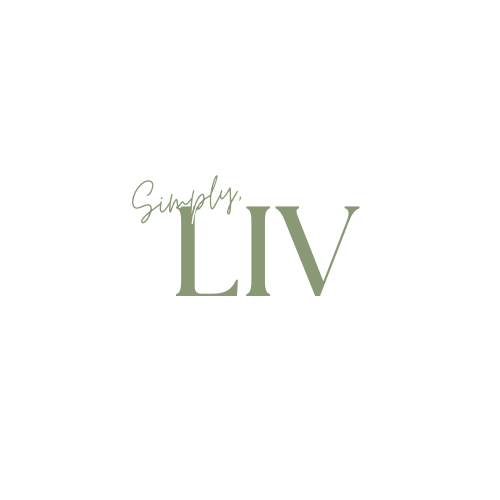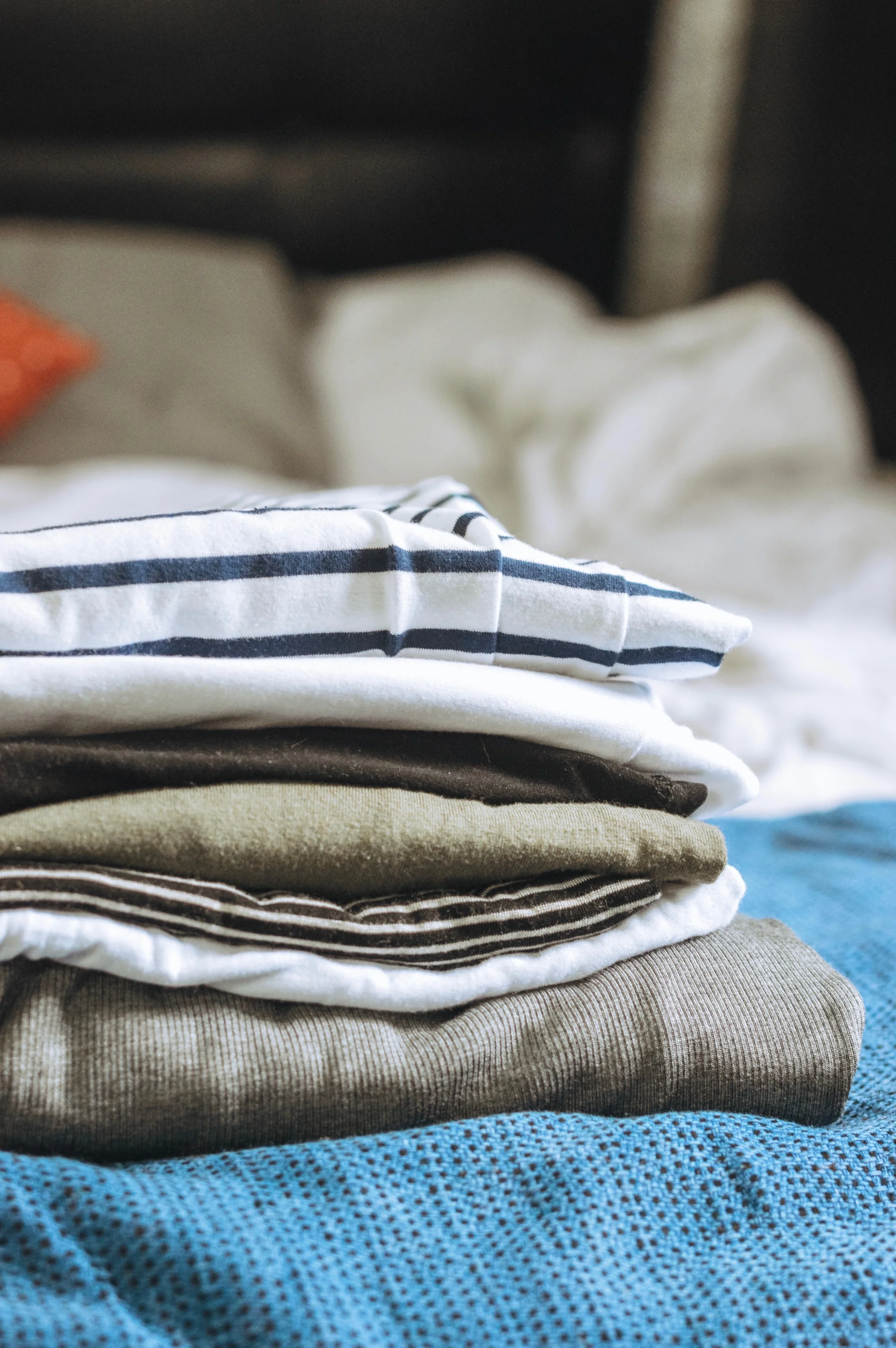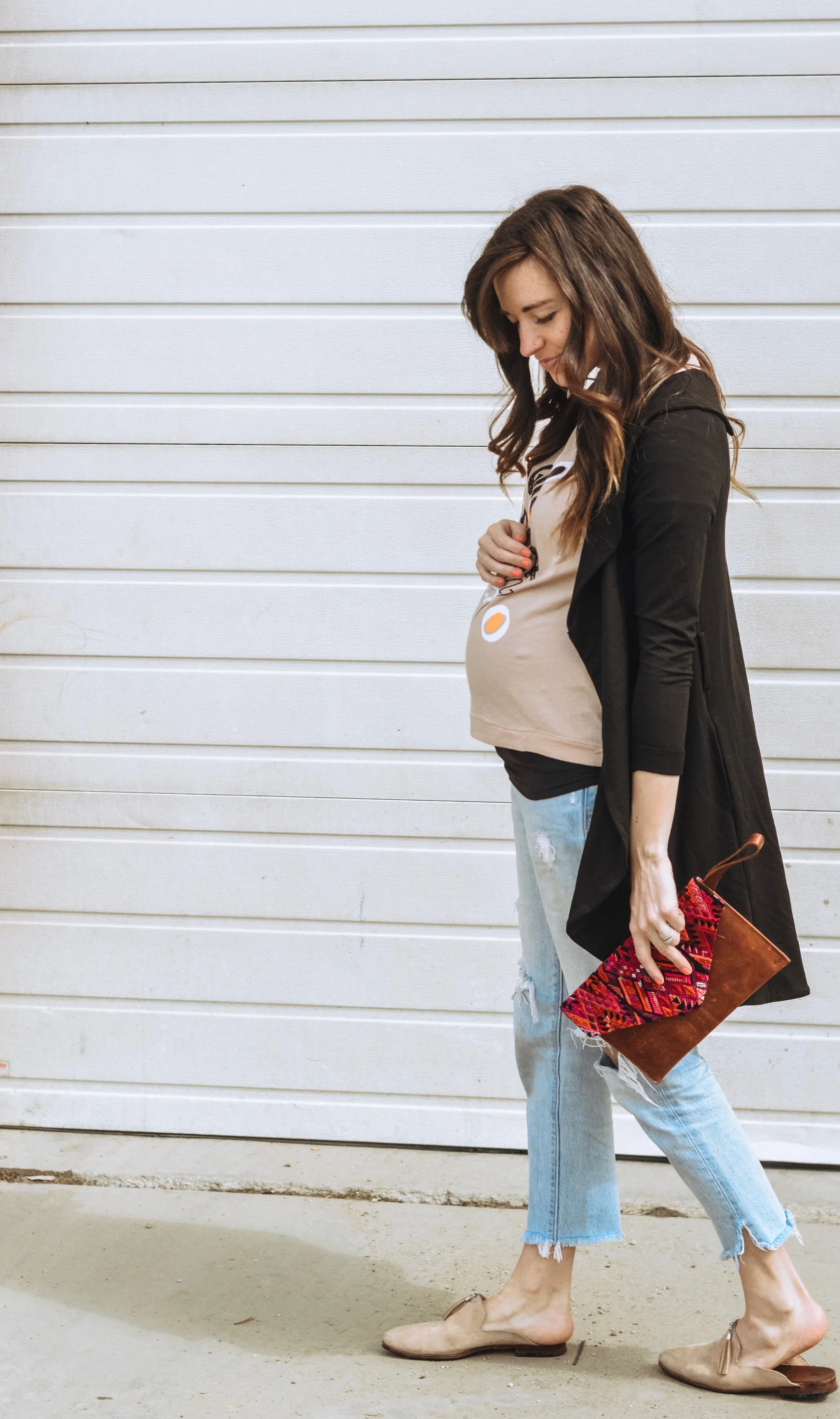Where to Shop for Ethically Made Basics (for All Bodies and Budgets)
Whether you fancy yourself a fashionista or wear clothes for the primary purpose of, you know, being clothed, basics are the cornerstone of a well rounded wardrobe. You know the ones, the white v-neck tee you wore till it had holes in the armpits and looked more yellow than white from coffee stains. The t-shirt dress you can dress up or dress down effortlessly. The striped long sleeve shirt you can wear anytime you want to add a layer or two of Parisian style to your day to day.
Try as I may, I can’t seem to gravitate from a wardrobe made up of mostly basics. And now that I’m more familiar with my style and “life-style” than ever, I don’t really want to. Even in outfits where I throw on a statement piece, like my MATTER Prints pants, I pair it with a basic to keep it feeling like “me”. Most days, you can find me in a striped tee and jeans (although, at nearly 8 months pregnant, I’m ditching the jeans most days). In the summer, a pair of mom shorts and a cozy button up or tank top are just fine.
However, considering the wear and tear that most basics get, I’m finding it more and more important to invest in ones that are made well. There are some pieces that work well buying secondhand, but for basics, buying new, from brands you trust, ensures the long life of the product.
Fabric content and quality, production standards, and price tag all pay a role in finding basics that will actually last more than a season. Most brands, ethical or not, have some kind of collection of basics, but finding the ones that will last AND are worth supporting can be tricky.
This post, I hope, will act as a resource when you’re on the hunt for a new closet staple. It’s not an exhaustive list, of course, but it does include the majority of brands I know, love, and have tried in real life. I’ll be focusing on textile type (NOT a black and white matter, as you’ll soon see) size inclusivity, ethics and price point making notes on which brands prioritize what aspect.
Fabrics to Look For
Organic Cotton
As conventional non-organic cotton becomes rightfully more and more controversial, GOTS certified organic cotton is a highly sustainable alternative that is making it’s way into more and more brands’ pieces. Conventional cotton is widely grown worldwide and it uses a shocking 6% of the world’s pesticides and 16% of the world’s insecticides. (Source). Furthermore, it takes 2700 liters of water to make a single t-shirt. These chemicals are both harmful to the consumer and, mostly, to the farmer growing the crops and to the environment.
Organic cotton on the other hand, uses no chemicals, pesticides, or insecticides to produce, isn’t hazardous to the health of the farmers, and uses much less water to grow and turn into fabric.
A Quick side note on cotton: I got a few questions about the difference between conventional cotton, Pima cotton, and organic cotton so here’s a quick breakdown in addition to what’s above.
Conventional cotton: grown worldwide in relatively unregulated conditions, usually using harsh chemicals
Pima cotton: called the “cashmere of cotton”, Pima cotton is simply a higher quality cotton than conventional. It yields a longer fiber which makes for a softer, better quality fabric. (Source). It can be both organic and non organic.
Organic cotton: cotton grown without the use of any chemicals or pesticides. This is the ideal type of cotton for sustainability, health, and fabric quality.
Hemp
Hemp is one of the most sustainable fabrics out there. It requires little water and grows extremely fast (producing around 250% more crop in the same amount of land as cotton). (Source).
Similar to linen, hemp produces a sturdy fabric that wears well and lasts years. It’s also naturally UV ray resistant. It can be blended with other fibers, like organic cotton, to yield a variety of textures and weights.
Linen
Linen, like hemp, is easy and quick to grow/harvest and requires even less water than organic cotton. It’s moisture resistant, becomes softer with wear/wash, and biodegrades when you’re done!
It’s grown from the flax plant, which is able to be used in its entirety, meaning no part of the plant is wasted. (Source).
Tencel/Lyocell/Modal
Here is when the controversy sets in. Few people will argue any cons about the above fabrics, but these last two definitely aren’t pure sustainability.
All three of these fabrics are created and made by Lenzing, in a closed-loop process. They’re similar, but made from different plants using the same process.
Pros:
Tencel (Lyocell) is a cellulose fiber marketed by Lenzing (the third generation fabric of second generation modal) made from the pulp of sustainably harvest eucalyptus trees certified by the Forestry Stewardship Council (FSC). Modal is made from the pulp of beech trees.
All three are produced in a closed-loop process, which means that all resources/materials/solvents used to produce it are recycled back into the process to do it over again.
It uses less water than organic cotton
Since it’s a naturally derived fiber, it’s also biodegradable
Cons:
It’s not a chemical free process and conventional chemicals are used to turn the fabric into Tencel from wood pulp (however, Lenzing noted that it has a 99% recovery rate of the solvents due to the closed-loop process). (Source).
The production method uses a lot more energy than is ideal. No fabric is exempt from using energy, but Lenzing has work to do in the coming years to produce a product that uses less energy to produce. (Source).
Bamboo Rayon/Vicose vs. Bamboo “Monocel”
Pros:
Although calling a fabric “bamboo” is slightly misleading because of of the processes the bamboo goes through to become a textile, it is plant based which means it will biodegrade.
Bamboo self-regenerates from its own roots, requiring little water and little grow time.
Bamboo Monocel is another Lyocell fabric, but this time made from bamboo, so it’s made in a closed loop, more environmentally friendly process. However, it’s harder to find.
Cons:
Although the cultivation phase may be more eco-friendly than growing cotton, manufacturing the fabric from bamboo is when the cons arise.
Most bamboo fabrics are labeled “rayon from bamboo” and the process to create this fabric is similar to that of Tencel or Modal but MUCH less sustainable since it isn’t a closed loop process, so the chemicals are released into the environment without reusing them. (Source). It’s essentially a synthetic fabric derived from a natural fiber.
There isn’t evidence that the properties of bamboo (UV ray resistant, antibacterial, water resistant) are present after the bamboo is processed into fabric.
Of course, there are plenty of ethical brands that use synthetic fibers to create their basics and any brand that takes steps towards sustainability should be lauded for their work. I would, however, push the envelope even further by asking if they consider themselves holistically “ethical” if they aren’t prioritizing the use of truly natural fibers and working to minimize their brand’s footprint.
It seems fairly cut and dry doesn’t it? Simply choose fabrics that are 100% organic and made from natural fibers at all costs.
However, like most issues of ethics and sustainability, it’s not always that simple.
The Unsustainable Reality Check
Why, you might ask, would any brand owner ever choose to use fabrics that are factually not great for the environment? I’ve noticed that bamboo derived fabrics are especially popular among ethical brands — have they just not done their research? I don’t think that’s the usually case.
The reality is that brands have A LOT to factor in when it comes to producing a quality product. First, they have to consider where the fabric they’re planning to use was grown, before it’s ever harvested or turned into fabric. Were the farmers treated fairly? Paid a living wage (an issue all on its own)? They have to source a fabric (regardless of what kind it is) from a responsible factory that pays its employees well. They need to design a product that represents their clientele well. They need to design a product that won’t disintegrate after a few wears/washes. They need to consider affordability and the “true cost” of the product and charge accordingly without marking it up too much or too little.
Obviously, you know all of this. But I think it’s all too easy to judge brands a bit harshly for not scoring a perfect 100% on the ethics/sustainability/inclusivity/price front. Indeed, we as the consumers should push for high standards and hold our ethical brands to even higher ones, but celebrating progress and steps in the right direction is important for growth in the industry too.
Ethical shopping isn’t a black and white matter in the least, not even when you’re trying to buy something as simple as a new white tee.
All of that said, below are a few brands that I’ve fallen for and whom, I believe, meet the criteria to be considered ethical/sustainable/inclusive and worth supporting.
Brands to Love
Encircled
Price point: $$-$$$
Encircled is a Canadian brand that prioritizes quality, longevity, and versatility. I’ve worked with them several times, own 3 or 4 pieces from them, and can say with full confidence that their pieces are worth the investment. On the size inclusivity chart, Encircled ranks higher than most with pieces that are meant to fit a wide range of sizes and, of course, fluctuate with your own body throughout life’s seasons. They offer sizes xs-xxl and considering that most of their styles are stretchy and oversized, can fit quite the range of body types.
As far as sustainability and fabric choice goes, they offer a healthy mix of fabric types. The majority of pieces I’ve tried from their line have been a Lenzing Modal blend (incredibly soft, stretchy and durable). They also work a lot with bamboo based products for its softness, but blend it with cotton for the strength and durability.
I chatted with Kristi, Encircled’s founder and designer about the murky issue of choosing sustainable fabrics and she wisely noted that oftentimes 100% natural fibers don’t hold up as well over time when they aren’t blended with other fabrics (oftentimes elastane, polyester or lycra) and, instead of creating a fully sustainable product that deteriorates more quickly, have opted to balance the two by mixing their natural fibers with less sustainable options for the sake of the longevity of the garment. Sustainability can be argued from both sides in this matter and although I don’t claim to be an expert, I can say that Encircled’s pieces truly stand the test of real life and real bodies.
(Pictured above: Encircled’s Nomadic V-Neck and Encircled’s Everyday T-Shirt Dress (soon to be released!))
The Natural Edition
Price point: $-$$
You’ve all heard me rave about The Natural Edition’s basics for a few months now, but I’ll say it again — I’m so impressed with this newly launched brand and their dreamy first collection of basics. I’ve spoken extensively with Nicole, the brand’s designer and owner, and she, like Kristi of Encircled, noted the struggle that goes into creating a brand that is as sustainable as it is practical and high quality.
The Natural Edition’s first collection features pieces made of GOTS certified organic cotton and Tencel, both of which (especially organic cotton) rank high on the sustainability charts. Their first collection is likewise oversized, excluding the Striped Breton Dress which fits true to size, with sizes ranging from xs-l (Nicole noted that this most accurately means sizes US 4-12). She’s also told me that her plan is to include more and more sizing options as her collections grow.
(Pictured above: The Stretch Jersey Long Sleeve Top and The Organic Cotton Oversized V-Neck. Use the code LIV20 for 20% off.)
LA Relaxed
Price Point: $-$$$
Another amazing brand with a wide selection of styles, sizes, and fabrics, LA Relaxed creates some of the coziest and easy to wear pieces I’ve ever tried. They’ve recently added hemp and organic cotton to their repertoire which is a huge step towards ultra-sustainability. They also use Tencel and Modal fabric so you can rest assured that their pieces are even softer than they look.
As far as sizing goes, they offer sizes xs-xxl (conventional 0-18) which is beautifully inclusive. I’ve worn all of the pieces I have from them during my third trimester and they’ve accommodated my baby bump perfectly.
(Pictured above: The Norah Dress in grey and the Lila Tank in black stripe. Use the code SIMPLY25 for 25% off.)
ROUND + SQUARE
Price point: $-$$
ROUND + SQUARE is one of the most mission driven and sustainably focused brands I’ve encountered in a while. All (yes, all) of their pieces are made with organic cotton (aside from their bandanas and scarves which are 100% silk). They sell a line of thoughtfully designed tees meant to inspire equality. Although their graphic tees are pretty amazing — you’ll see more of those soon — their solid color shirts are beautifully made, slightly thin and stretchy, and come in a lovely variety of colors.
Their sizing is refreshingly inclusive as well, offering xxs-xl with an emphasis on oversized fit. Their models show a variety of body types that will hopefully make ordering the correct size easier!
(Pictured above: The Relaxed Long Sleeve Tee in plum and the Basic Boxy tee in Olive Nights. The first photo in this post features their Sunflower Silk Bandana.)
Honorable Mentions:
Let’s end this novel of a post by restating that slow fashion is messy and choosing to support sustainable brands comes with lots of grey area that, luckily, is up to the consumer to push for and decide what to prioritize.
I’d love to hear your thoughts on the sustainable fabrics listed above or any other struggles you might face when trying to shop for not-so-basic-basics.
*This post is part of a long-term collaboration between several brands and myself. As always, all opinions, photographs, and storytelling are my own. Thank you for supporting the brands that make SL&Co possible!*















